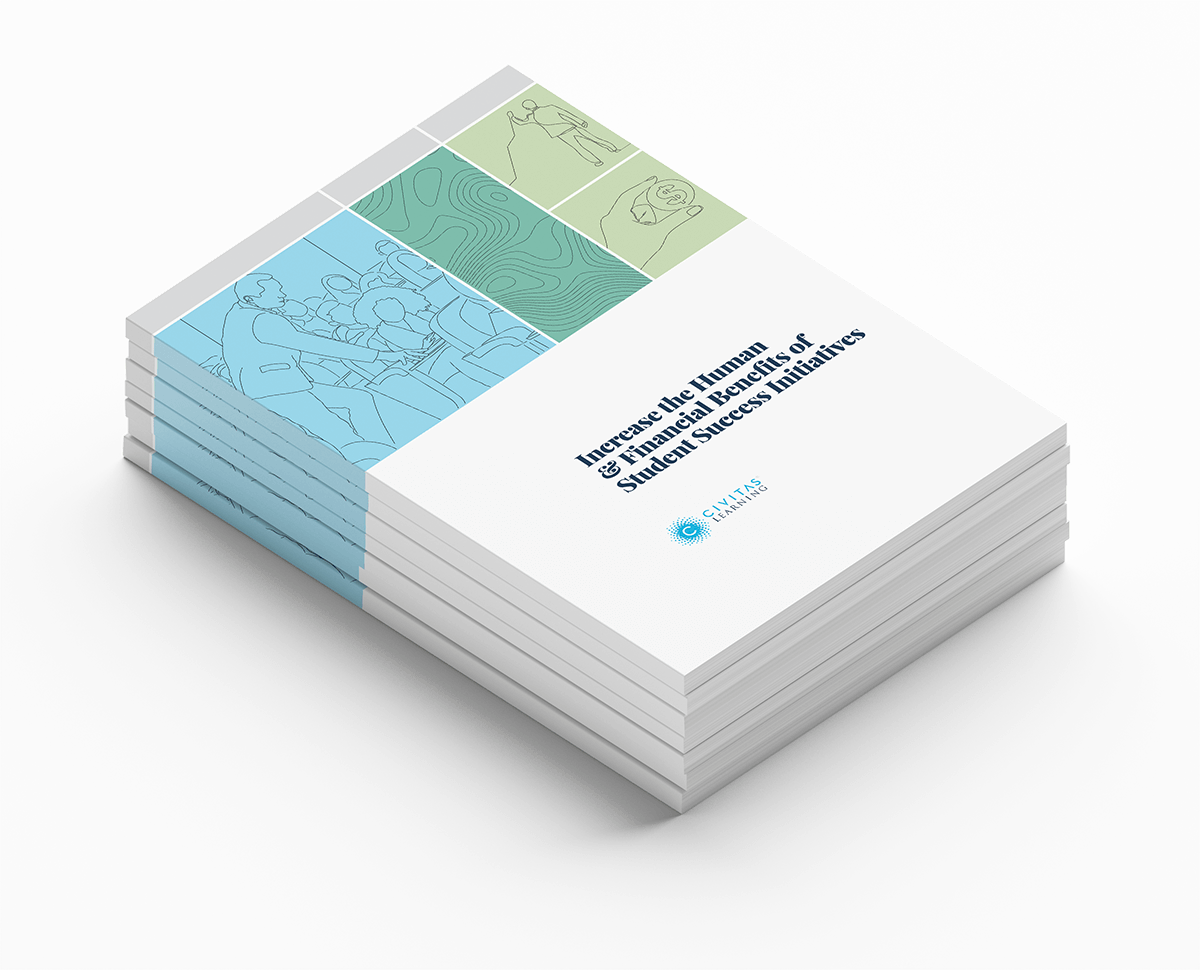
Building a Student Success Model that Supports Students and Generates Revenue
Share this Post
After decades of growth and expansion, colleges and universities face massive disruption to their traditional business. This disruption challenges conventional operating models, results in lost tuition revenue, and even threatens the very existence of many institutions.
To remain financially healthy, it’s vital that institutions implement data-activated student impact strategies that produce positive student outcomes and generate net tuition revenue. Student success analytics and intelligent case management software provide the infrastructure needed to effectively develop and implement data-informed strategies that act as revenue generators instead of cost centers.
Today, success requires shifting from one-size-fits-all, status quo approaches to multi-faceted, institution-specific approaches that allow leaders and their teams to respond quickly to evolving student needs over time.
“Status Quo” Student Success Models Aren’t Keeping Up with Change
Even before the pandemic, colleges and universities faced serious challenges to the traditional way of doing business. A decline in the perceived value of higher education, a shrinking number of high school graduates, a diversifying student population, more alternatives to postsecondary education, and shifting labor market demands are changing the higher ed landscape. These challenges lead to enrollment declines, stagnating persistence and completion, increasing financial instability, and even closure.
On top of that, the pandemic amplified existing pressures and added new ones. For some institutions, the pandemic exacerbated the existing enrollment crunch leading to even more lost revenue as expenses continued to increase – further threatening institutional financial health.
“Status quo” approaches, where approximations are good enough, information is siloed, and strategies are backward-looking, won’t work. Traditional methods rooted in historical data, general best practices, and set-and-forget programs increase costs while diluting effectiveness. Ever-evolving challenges are outpacing the resources and operating budgets required to support the traditional approach to student success.
The result? A growing disconnection between the desired student outcomes an institution needs to achieve its mission and stay viable and the results they can achieve – a Student Success Impact Gap.
Failure to close this gap will create a ripple effect of negative consequences resulting in lost generations of students and an existential crisis for institutions. To close this gap, institutions must predict risks for every individual student and student group, diagnose the underlying cause of risk factors and prescribe precise interventions that address the needs of their student.
Increase the Impact of Student Success Initiatives
Why We Must Close Student Impact Gaps
Leaders need more than status quo practices built for a different time to face this uncertainty and change. The future of student success requires a transformational shift away from interventions that focus only on at-risk populations, are limited to retention metrics, or are based on averages, benchmarks, and best guesses.
Instead, it’s time to re-evaluate what works for student success. Civitas Learning partners who’ve achieved sustained improvements in their student and institutional outcomes use a combination of data-activated strategies that they regularly assess, iterate, and adjust. Like these institutions, your team can make a difference for students this term as they also build and adapt strategies for future students.
To do this, you need intelligent student success software that equips you with real-time visibility into student risk for various metrics throughout the student experience. When you know the factors influencing your student’s ability to succeed, you can connect them to the most effective interventions and work together with your team to monitor their progress. Insight into what works allows your team to continuously fine-tune student success strategies and allocate limited resources to the initiatives and interventions with the highest return on investment.
There is no cure-all, and the right combination of strategies looks different at each institution. To close the student impact gap at your institution, focus your team’s efforts on multiple small, high-impact initiatives that meet the needs of your particular student population. A data-activated student impact strategy empowers your team to make cumulative marginal gains that add to more students succeeding and a significant return on investment over time.
7 Student Success Practices that Support Financially Healthy Institutions
Civitas Learning partners use the following practices to build sustainable student success models using data-informed strategies that support student success and the financial health of their institutions.
1. Grow the Breadth and Depth of Your Student Data
Go beyond simple demographic data by bringing all of your student data together. Your student success software should incorporate many student data: academic, behavioral, engagement, financial, sentiment, and more. Comprehensive student data from various sources like SIS, LMS, CRM, and card swipe systems builds a complete student picture. Nightly data updates mean advisors, faculty, and staff can spot trends, check in with students, and course-correct this term. Incorporating new data sources quickly allows your institution to meet ever-changing educational demands and conditions.
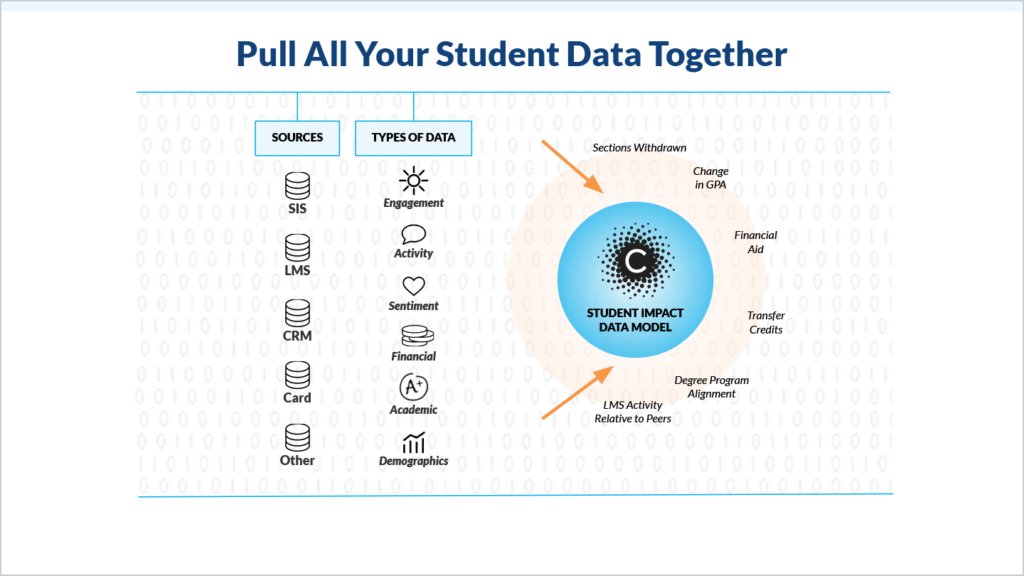
2. Put Specialized Data Science to Work
Access diagnostic, descriptive, and predictive information specific to your institution and students in one place. Avoid using data analytics only to assess what happened the previous term. Assess and take action on accurate predictions from the first to the last day of this term. Your student success platform should continually process your student data to generate new insights, such as factors driving persistence and completion, and curate comprehensive datasets to quickly and easily see patterns and trends.
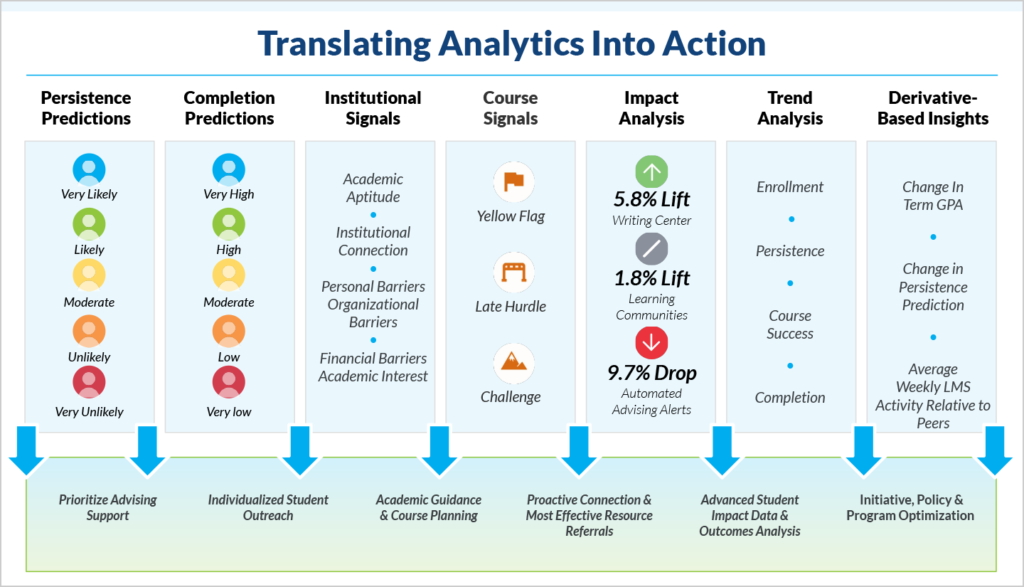
3. Better Predict Student Outcomes
Your student success software should provide a multi-faceted view of potential student outcomes by combining persistence and completion predictions, contributing risk factors, enrollment and course trends, and other insights. This visibility into the whole student experience allows your team to take a more equitable approach based on current engagement and behavior rather than historical and demographic trends. Better prediction of student outcomes improves the accuracy and timeliness of your team’s student success efforts resulting in a more significant impact on multiple student outcomes.
4. Understand Barriers, with Precise Clarity
Uncover all barriers and risk factors faster to precisely understand the root cause of student issues. The ability to segment data reveals risk factors -academic progress, engagement, financial factors, and institutional policy-that affect the likelihood of successfully persisting toward graduation for particular student groups.
When you know the specific cause of student challenges, you can provide more precise interventions. For example, suppose you know that successful completion of College Algebra indicates success later in the curriculum. In that case, you can offer more support to increase the successful completion of that course. By improving student performance in College Algebra, your team also drives lifts in overall graduation rates down the road.
5. Intervene Faster
Stay one step ahead and adjust to your student success approach before it’s too late. Your data analytics and student success software should provide insights that help you know the exact levers to pull to influence student success and when. It should reveal proactive student engagement opportunities, help you prescribe specific actions, and give unique direction to each student for maximum impact. Make data-informed recommendations to students who need support – throughout the term – to help address potential challenges early and help scale advising capacity by spreading out interactions and outreach.
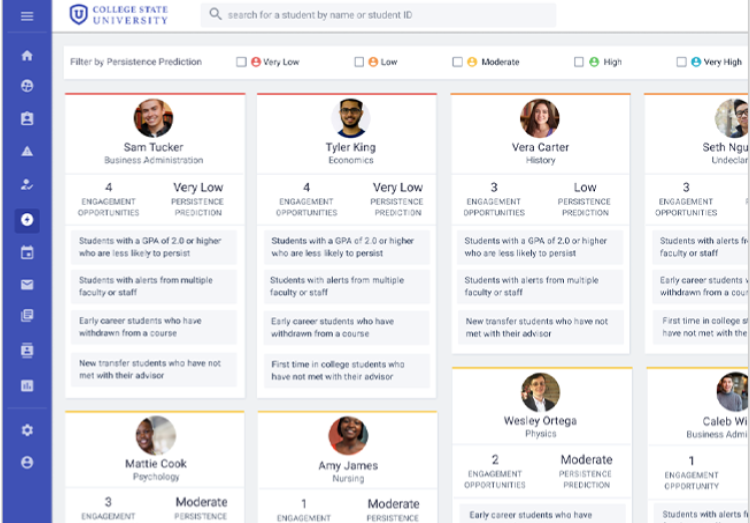
6. Optimize Initiatives Policies and Programs
Successful student success models employ a combination of initiatives and interventions that work together to move the needle on student success. Your student success software should help your team align on what approaches work. And it should help leaders like you understand the efficacy and return on investment of every policy, program, and initiative so your institution can invest in strategies that work.
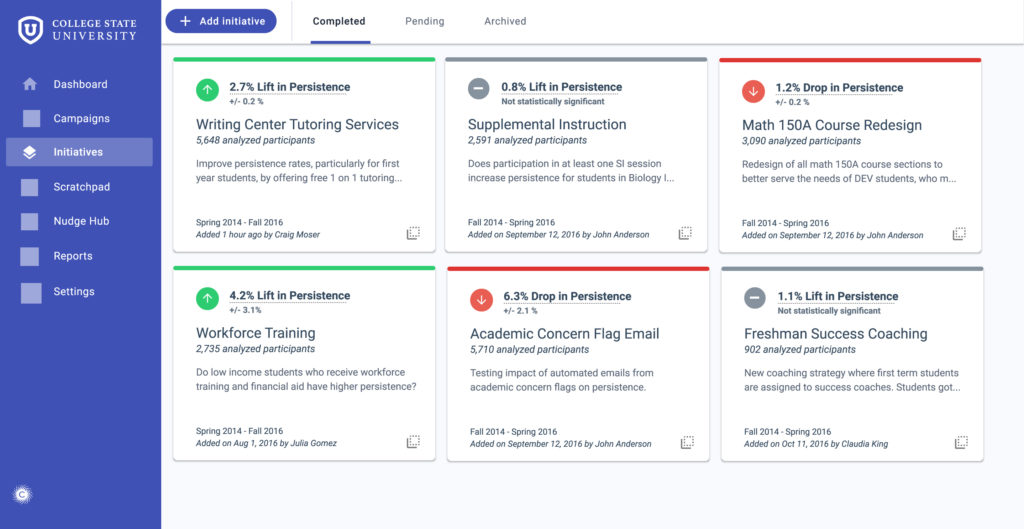
7. Continuously Recalibrate
Make every interaction count by using your student data to optimize success strategies across your institution. With prescriptive and predictive analytics, you can build on what you already know by continuously tuning and adapting processes and practices to gain even higher levels of success. Access to up-to-date, holistic data enables your institution to identify the most important opportunities for improvement, measure what’s working and for whom, and connect people, processes, and workflows with operational intelligence.
Creating a data and analytics culture across departments allows your institution to discover new ways to boost impact beyond traditional academic interventions. The Civitas Learning Student Impact Platform enables your team to build opportunities to analyze and adjust between terms to get better faster. Real-time visibility into what’s working means you can maximize effectiveness and strategically invest human and financial resources in those programs that improve student success and generate the highest return on investment.
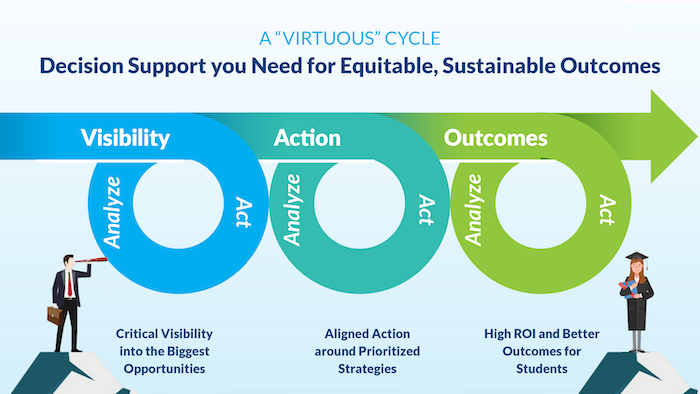
It’s Imperative to Shift to a Data-Activated Approach to Student Success
There is an institutional and moral imperative to impact student success in financially sustainable ways meaningfully. Despite the uncertainty and growing student needs, institutions can establish student success models that achieve positive outcomes and support financial health. To achieve this, leaders must understand the factors influencing a student’s likelihood of success to know where to focus efforts. A clear understanding of which interventions are most effective for particular students and student groups enables institutions to coordinate action across campus strategically.
By shifting to a data-activated student impact strategy, your team can precisely respond to the needs of students when they need it most throughout their college experience -leading to better student outcomes and more financially healthy institutions.
